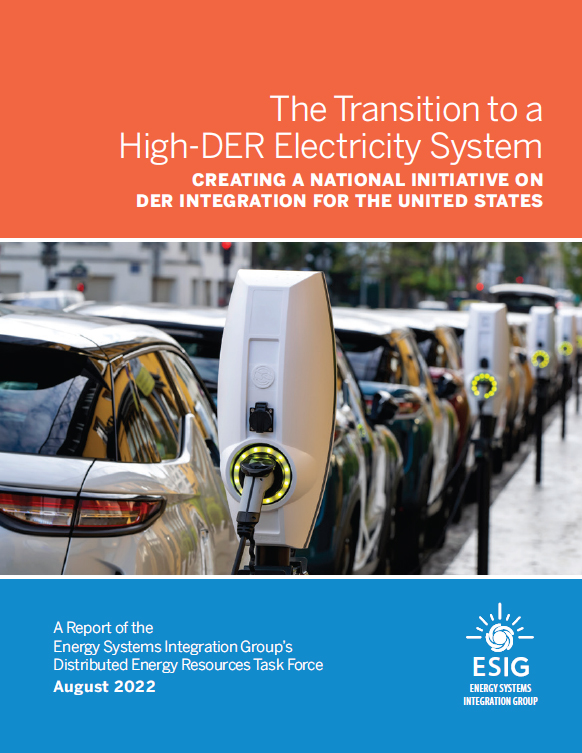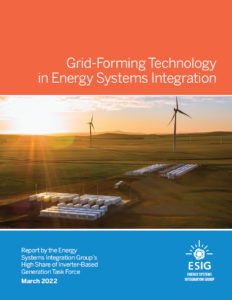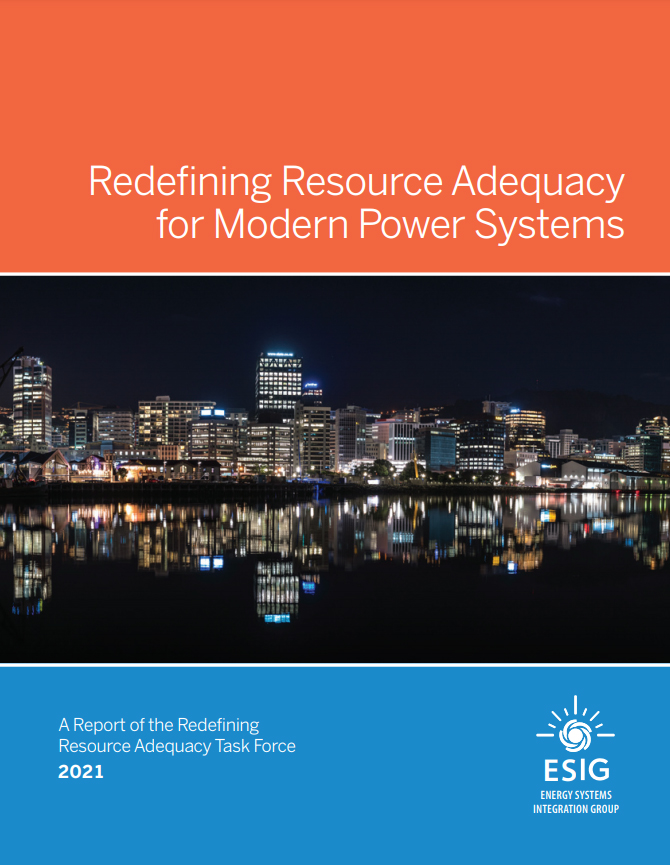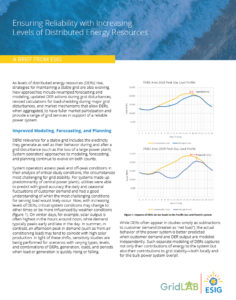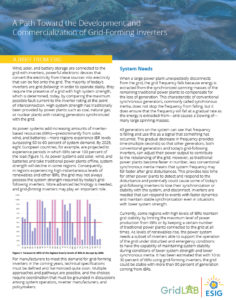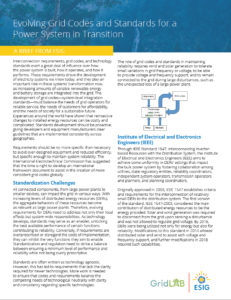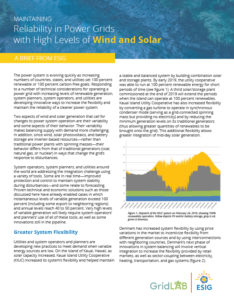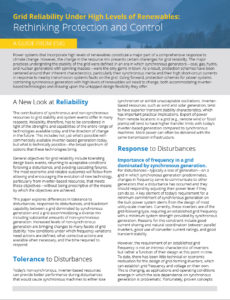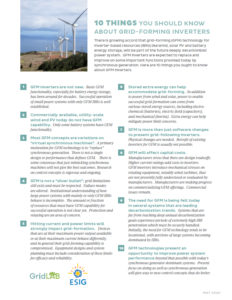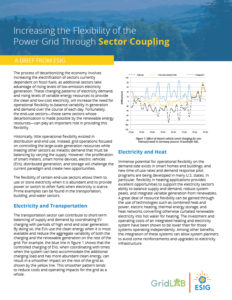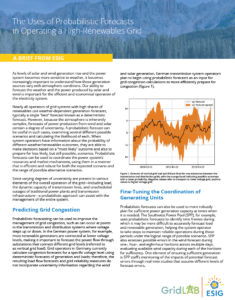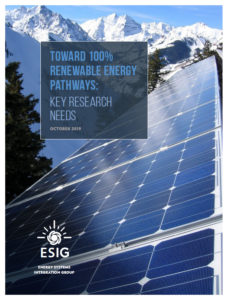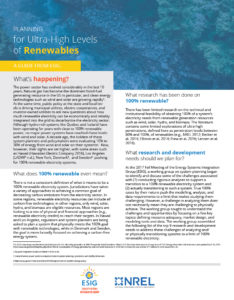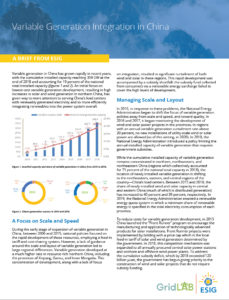 Foundations of Integrated Planning: Defining a Framework for Comprehensive Energy System Planning
Foundations of Integrated Planning: Defining a Framework for Comprehensive Energy System Planning
June 2025
Foundations of Integrated Planning: Defining a Framework for Comprehensive Energy System Planning is the first report in a series of Integrated Planning reports from ESIG. It defines integrated planning and presents a four-part framework focused on the integration of inputs, analysis, actions, and decision-making.
Click here to visit the report page and download a copy of the full report and executive summary.
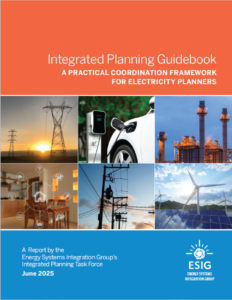 Integrated Planning Guidebook: A Practical Coordination Framework for Electricity Planners
Integrated Planning Guidebook: A Practical Coordination Framework for Electricity Planners
June 2025
The Integrated Planning Guidebook: A Practical Coordination Framework for Electricity Planners, is the second report in a series of Integrated Planning reports from ESIG. The Guidebook provides practical recommendations for today’s electricity system planners to advance toward increasing levels of integration using a walk/jog/run approach.
Click here to visit the report page and download a copy of the full report and executive summary.
 Optimization for Integrated Electricity System Planning: Opportunities for Integrated Planning in Capacity Expansion Models
Optimization for Integrated Electricity System Planning: Opportunities for Integrated Planning in Capacity Expansion Models
June 2025
Optimization for Integrated Electricity System Planning: Opportunities for Integrated Planning in Capacity Expansion Models is the third report in a series of Integrated Planning reports from ESIG. The report explores the opportunities and challenges of using economic optimization capacity expansion modeling to consider a broader set of integrated planning constraints and investment opportunities.
Click here to visit the report page and download a copy of the full report and executive summary.
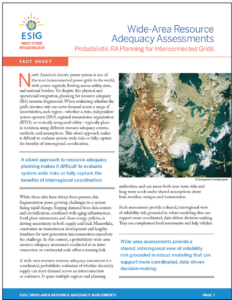 Wide-Area Resource Adequacy Assessments: Probabilistic RA planning for Interconnected Grids Fact Sheet
Wide-Area Resource Adequacy Assessments: Probabilistic RA planning for Interconnected Grids Fact Sheet
June 2025
A wide-area resource adequacy assessment, spanning multiple regions and electricity system planning authorities, provides a shared, interregional view of reliability risk grounded in probabilistic modeling that can support more coordinated, data-driven planning and decision-making.
Click here to visit the task force page for a copy of the fact sheet, as well as additional resource adequacy materials.
Phase II Grid Stability Services: A Framework for Quantifying Supply and Demand of Grid Stability Services
May 2025
The Reliability Services project team has developed a comprehensive framework for the assessment of system needs and the capabilities of all existing resources (including IBRs) to provide services in response to each of the needs. The framework includes analysis dynamic stability issues—such as voltage, angle, and frequency stability—in the context of increasing levels of IBRs. It is being tested on a realistic power system model using actual planning cases from the Southwest Power Pool (SPP) an Independent System Operator in the U.S. Eastern Interconnection. The framework is applicable to any power system, especially those anticipating a high share of renewables, to evaluate system stability in terms of grid strength and voltage and frequency support.
Click here to visit the project team page for a downloadable copy of the framework and access to the supporting webinar materials.
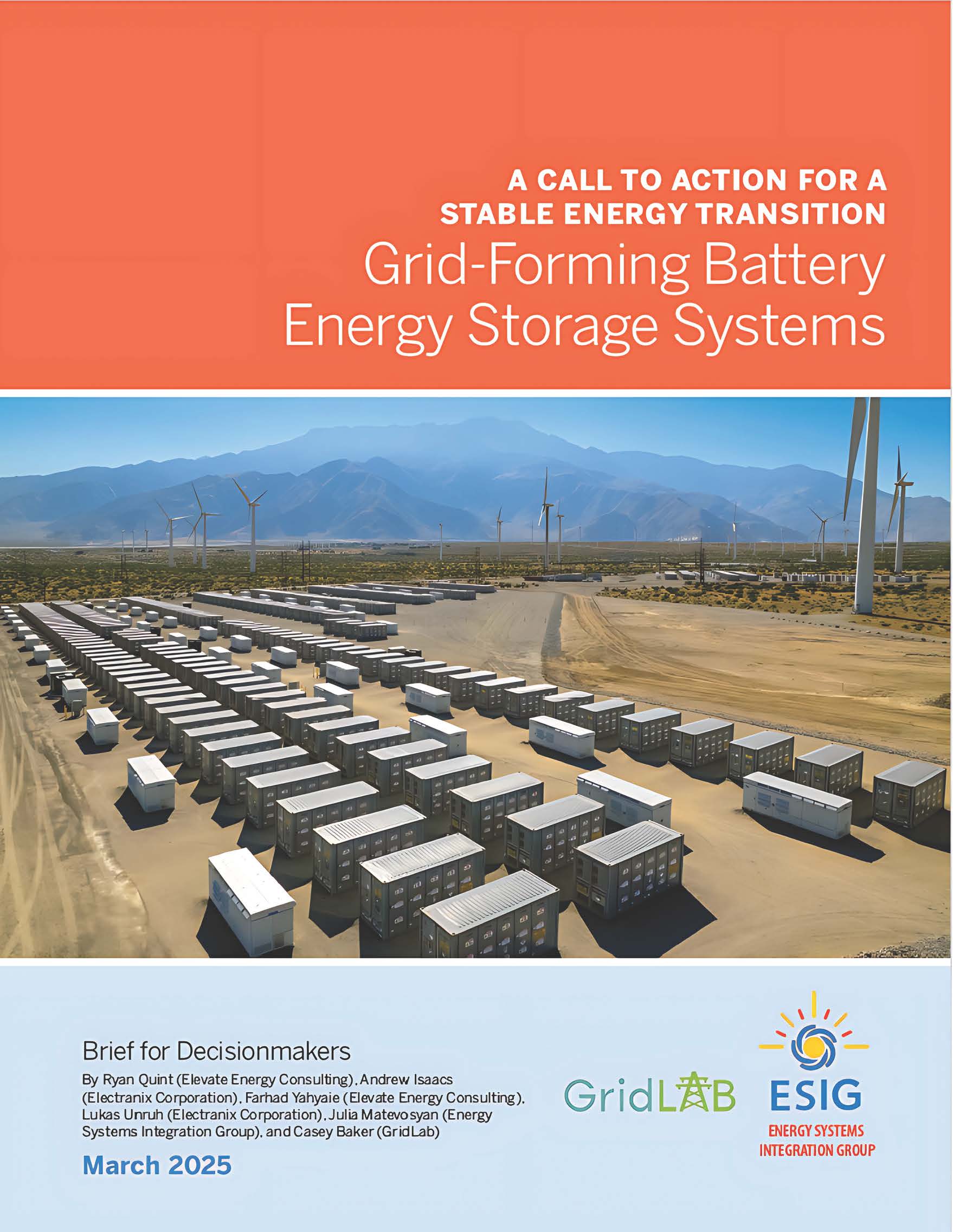 A Call to Action for a Stable Energy Transition: Grid-Forming Battery Energy Storage Systems
A Call to Action for a Stable Energy Transition: Grid-Forming Battery Energy Storage Systems
March 2025
Equipping utility-scale batteries with advanced, grid-forming controls is a proven and cost-effective way to help stabilize the future grid. But while grid-forming batteries (GFM BESS) are commercially available and are deployed globally, U.S. deployment is lagging. This brief discusses the benefits of utility-scale batteries with grid-forming inverters and summarizes a study demonstrating their key benefits when deployed widely in a typical grid. Scaling deployment of this technology during the current interconnection boom in wind, solar, and batteries is critical to unlocking the full potential of today’s renewable energy.
Click here to visit the project team page for a downloadable copy of the brief for decisionmakers and link to the webinar.
 Electricity Market Visions to Support a Reliable and Affordable Electric Grid Under Electricity Decarbonization
Electricity Market Visions to Support a Reliable and Affordable Electric Grid Under Electricity Decarbonization
March 2025
Electricity Market Visions to Support a Reliable and Affordable Electric Grid Under Electricity Decarbonization describes how organized electricity markets can play a key role in achieving a future clean electricity system that maintains the goals of affordability and reliability while fostering further innovation.
Click here to visit the report page for a downloadable copy of the report and executive summary.
 Gaps, Barriers, and Solutions to Demand Response Participation in Wholesale Markets
Gaps, Barriers, and Solutions to Demand Response Participation in Wholesale Markets
January 2025
This report examines why demand response participation remains limited in wholesale markets and proposes actionable solutions to unlock its full potential. As the electricity grid transitions to accommodate more renewable energy and electrification, demand response can play a vital role in ensuring grid reliability and dampening price volatility in wholesale electricity markets. However, despite its recognized potential to help manage electricity demand, particularly during peak load periods when generation may be scarce, the actual deployment of demand response in wholesale electricity markets has stagnated or even declined in recent years. The analysis draws from extensive interviews with industry stakeholders, including system operators, regulators, aggregators, and consumers, to identify five critical gaps that must be bridged to accelerate demand response deployment.
Click here to visit the report page for a downloadable copy of the report, executive summary, policy brief and online appendix.
Summary of the ‘Panel on the Status of Inverter-Based Resource Standards Development and Integration Efforts’ at the IEEE Power and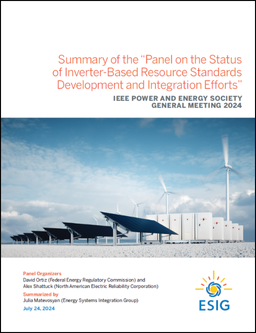 Energy Society General Meeting 2024
Energy Society General Meeting 2024
November 2024
This document is a summary of a panel discussion held at the IEEE Power and Energy Society General Meeting in July 2024. The panel focused on the integration of inverter-based resources (IBRs) such as solar, wind, and battery energy storage into the bulk power system.
Click here to download the summary.
Phase I Results from a Simulation Exercise Assessing the Advantages of Leveraging the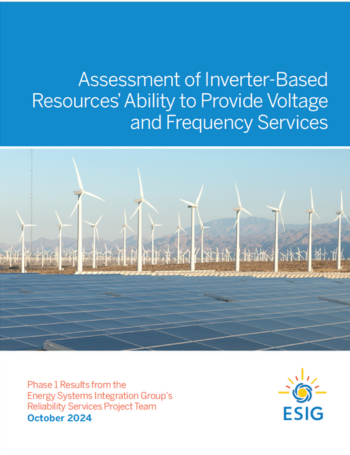 Full Capability of Existing IBRs
Full Capability of Existing IBRs
October 2024
This paper summarizes a simulation performed by the Reliability Services Project Team that assessed how inverter-level frequency response and voltage control in existing wind, solar, and battery resources already on the network can benefit power system reliability under extremely high levels of inverter-based resources.
Click here to download the results.
Brief for Decisionmakers: IBR Interconnection  Requirements; Status and Needs
Requirements; Status and Needs
October 2024
This brief for decisionmakers, “IBR Interconnection Requirements: Status and Needs,” summarizes the current status of standards development and related efforts to improve interconnection standards for inverter-based resources (IBRs), and highlights ways that industry stakeholders can be involved.
Click here to download the brief.
Grid Planning for Building Electrification
 October 2024
October 2024
Grid Planning for Building Electrification discusses new challenges for distribution systems under increased levels of building electrification and outlines key actions for planners and stakeholders to prepare the system for these new load impacts.
Click here to visit the report page for a downloadable copy of the guide and executive summary.
Diagnosis and Mitigation of Observed Oscillations in IBR-Dominant Power Systems: A Practical Guide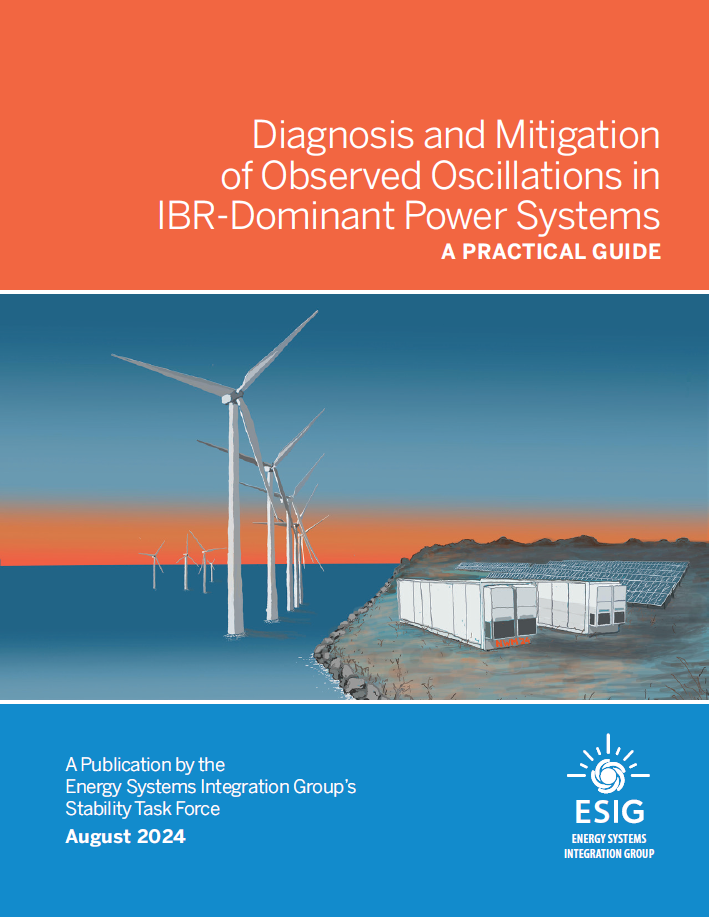
August 2024
The increasing use of inverter-based resources (IBRs) has led to oscillations with a wider range of characteristics and root causes, raising new issues and risks for power system operation and planning. This practical guide is a starting point for practitioners who encounter oscillatory behavior, a sort of field guide or diagnostician’s assistant. This guide helps the user find out which applies, what to do about it, and where to go for more help. Consulting the guide is the first step that follows “I see an oscillation. What is it? What do I do about it?” A causality screening matrix is included that introduces a compact synopsis of attributes and causality, and the detailed table of contents will help the more experienced user to zero in on the topic of their choosing.
Click here to visit the report page for a downloadable copy of the guide and executive summary.
Interregional Transmission for Resilience: Using Regional Diversity to Prioritize Additional Interregional Transmission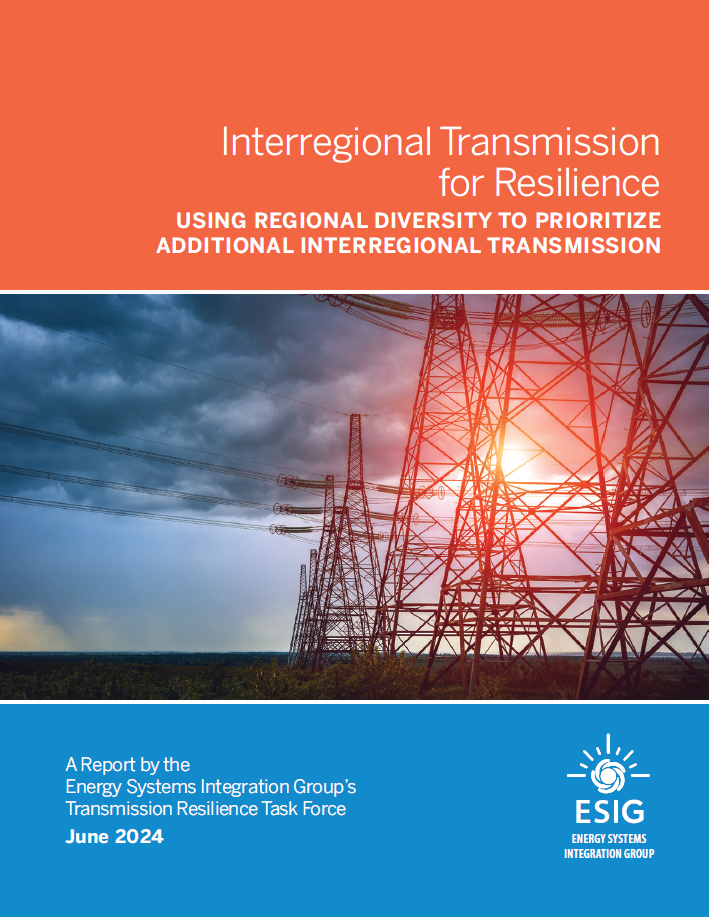
June 2024
This report sets forth a methodology for assessing where additional interregional transmission capability can provide the greatest benefits for system resilience. There is a growing need to ensure that electricity systems remain robust and adaptable in the face of future load growth, a changing resource mix, and a changing climate. Interregional transmission improves grid resilience by allowing regions to access diverse resources in neighboring regions not affected by the same weather and load conditions. But despite the potential benefits, current planning processes often overlook the resilience value of interregional transmission, focusing on local reliability solutions within only a small geographical region.
Click here to visit the report page for a downloadable copy along with accompanying materials.
Assessing the Flexibility of Green Hydrogen in Power System Models
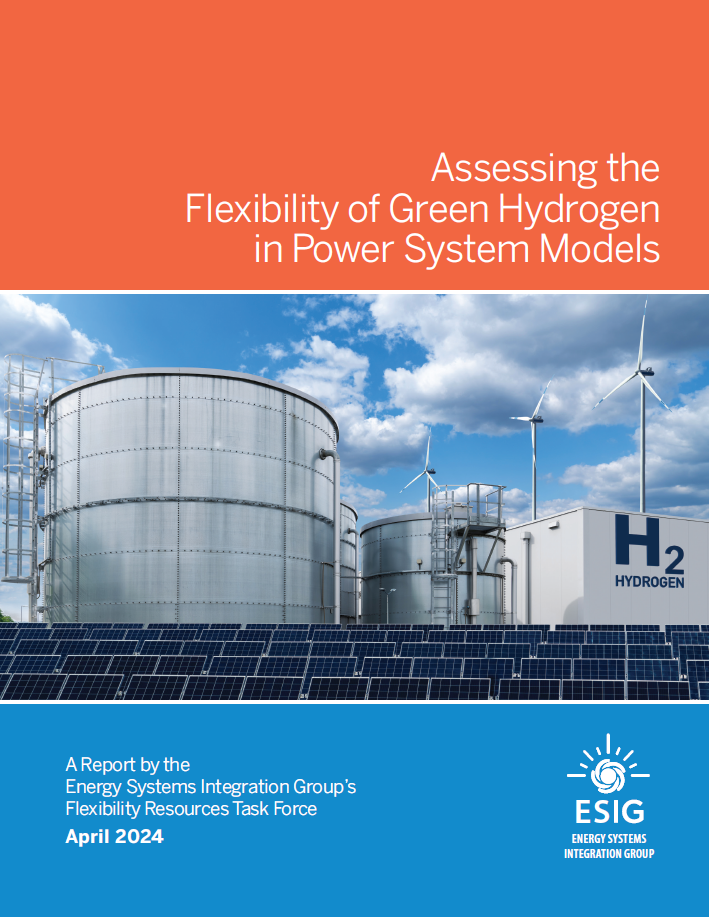 April 2024
April 2024
This report explores the modeling needs and data requirements to integrate hydrogen into power system studies. As levels of wind and solar rise, power systems will require different types of flexibility to balance supply and demand and maintain reliability. Green hydrogen production has the potential to provide such flexibility, either by stand-alone hydrogen production that behaves as a flexible load or by using hydrogen to produce electricity via a fuel cell or combustion engine. Hydrogen has the ability to store energy for use in many time frames (from seconds to seasons), a rapid response time, and the potential for large-scale deployment.
Click here to visit the report page for a downloadable copy along with accompanying materials.
New Resource Adequacy Criteria for the Energy Transition: Modernizing Reliability Requirements
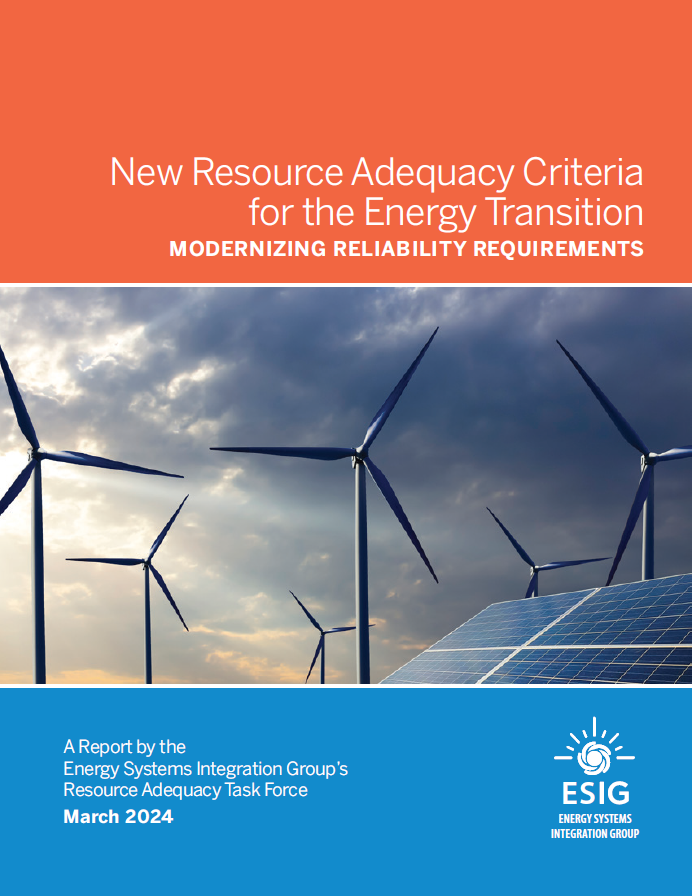 March 2024
March 2024
This report outlines the need for, and a path toward, the use of a multi-metric criteria approach in resource adequacy analysis. It explores what it might look like to adopt a multi-metric criteria approach, a framework that would provide a more comprehensive assessment of the size, frequency, and duration of shortfalls; explicitly consider rare, high-impact events such as extreme weather; and stress-test extreme events that may fall outside historical records. The report also discusses the need for a system’s resource adequacy criteria to establish the appropriate trade-off between reliability and cost. Different options for improving reliability come at different costs, and eliminating all risk in the system is not possible; therefore, as a society, we have to decide how much we will pay for reliability.
Click here to visit the report page for a downloadable copy along with accompanying materials.
Modeling the Effects of Distributed Generation on Transmission Infrastructure Investment: A Western Case Study
February 2024; Updated May 2024
This report models the impacts that increasing distributed generation deployments may have on transmission flows and transmission investments. This study looked at the Western Interconnection to explore how increasing distributed generation deployments may impact zonal transmission flows and the need for transmission investment. It also investigated potential synergies between transmission and resource expansion. Three scenarios representing different long-term capacity expansion decisions were modeled: a centralized scenario held distributed generation at current levels while selecting utility-scale generation, a hybrid scenario held distributed generation at double current levels while selecting utility-scale generation, and a distributed scenario simulated distributed generation resources.
Click here to visit the report page for a downloadable copy along with accompanying materials.
Charging Ahead: Grid Planning for Vehicle Electrification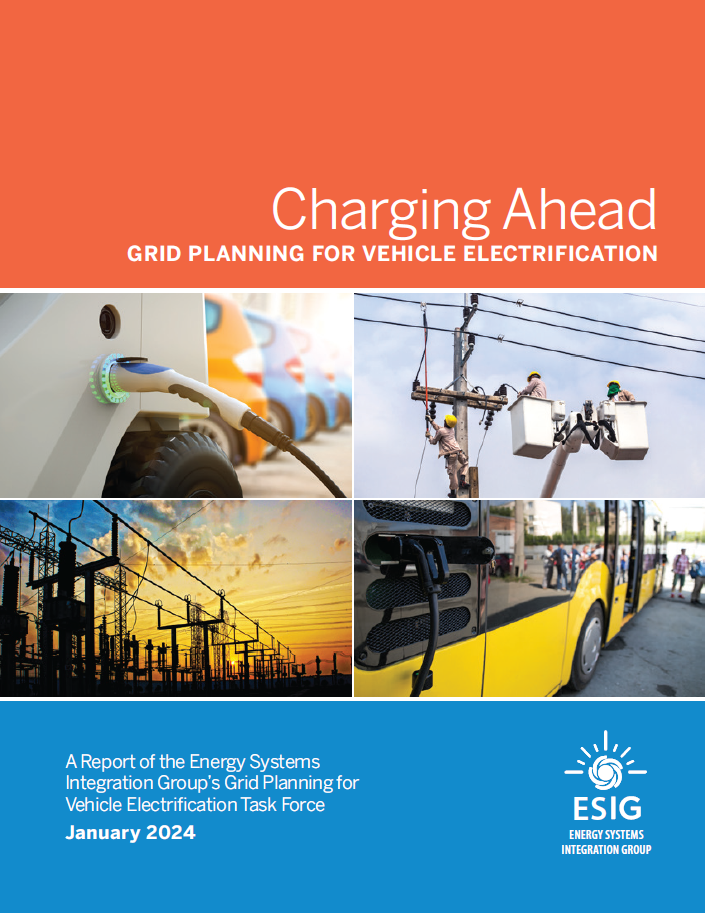
January 2024
This report is a national-level examination of transportation electrification challenges that impact integrated distribution planning. The report’s primary audiences are utilities, utility regulators and other state decision-makers, EV manufacturers, charge station operators, aggregators, and other technical experts. It explores the challenges of grid planning for electric vehicles; describes roles for existing processes, customer-collaborative processes, and proactive multi-stakeholder processes in enabling vehicle electrification; and outlines four priority actions that can be taken today.
Click here to visit the report page for a downloadable copy along with accompanying materials.
Weather Dataset Needs for Planning and Analyzing Modern Power Systems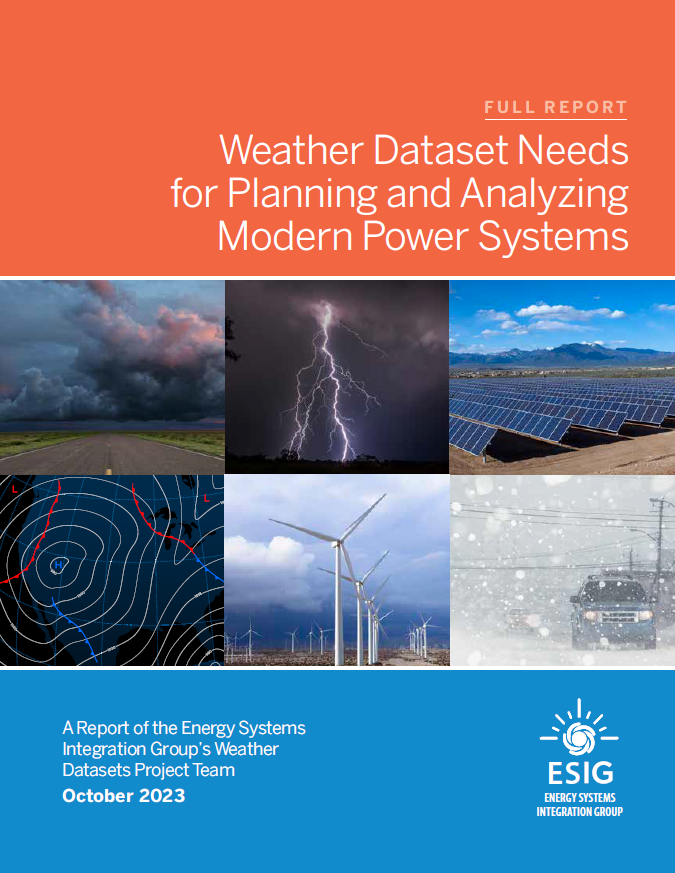
October 2023
This report focuses on the weather data needs for modeling power systems that are becoming increasingly weather-dependent as shares of wind, solar, and battery storage increase, and as HVAC and transportation loads are electrified. The report discusses the gaps in our existing data and modeling approaches, and outlines a process for building the robust weather datasets needed for reliable, resilient systems.
Click here to visit the report page for a downloadable copy along with accompanying materials.
Market Evolution For 100% Clean Electricity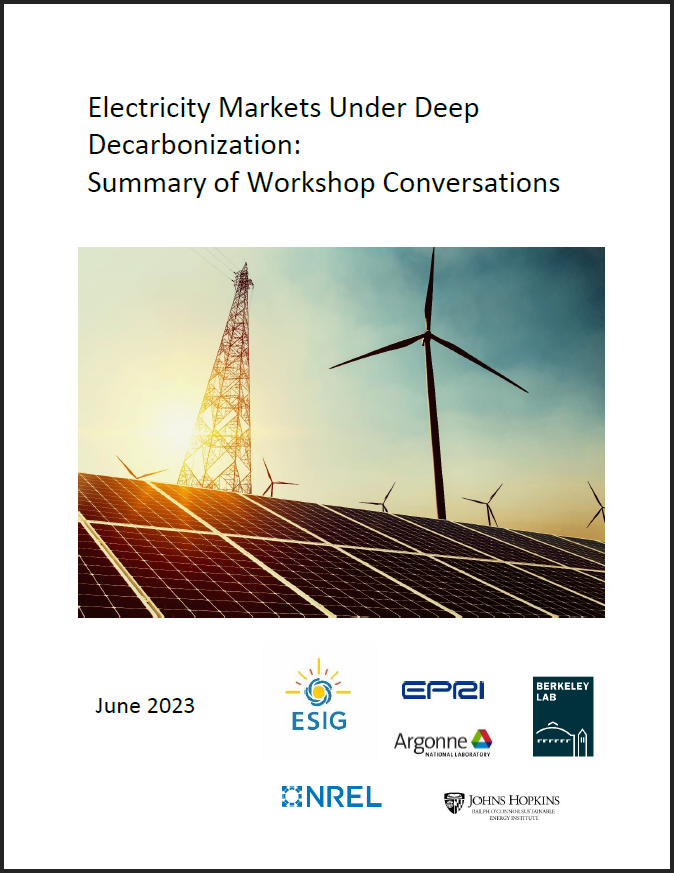
June 2023
Electric power systems are undergoing major transformation. Organized electricity markets may play a key role on these systems of the future and achieving a system that can meet climate goals while still maintaining our everlasting goals of affordability and reliability.
Linked below is a summary of conversations from a workshop on electricity markets under deep decarbonization held from February 28 to March 1, 2023, in Washington, DC. Sponsors were the Energy Systems Integration Group, Electric Power Research Institute, Argonne National Laboratory, National Renewable Energy Laboratory, Lawrence Berkeley National Laboratory, Johns Hopkins University, and the Department of Energy. The workshop convened a set of experts to listen and debate the existing market designs and their effectiveness, solutions that have been explored and their effectiveness, and the possible actions necessary to bridge remaining gaps.
Click here to download the workshop summary.
A Unique Window of Opportunity: Capturing the Reliability Benefits of Grid-Forming Batteries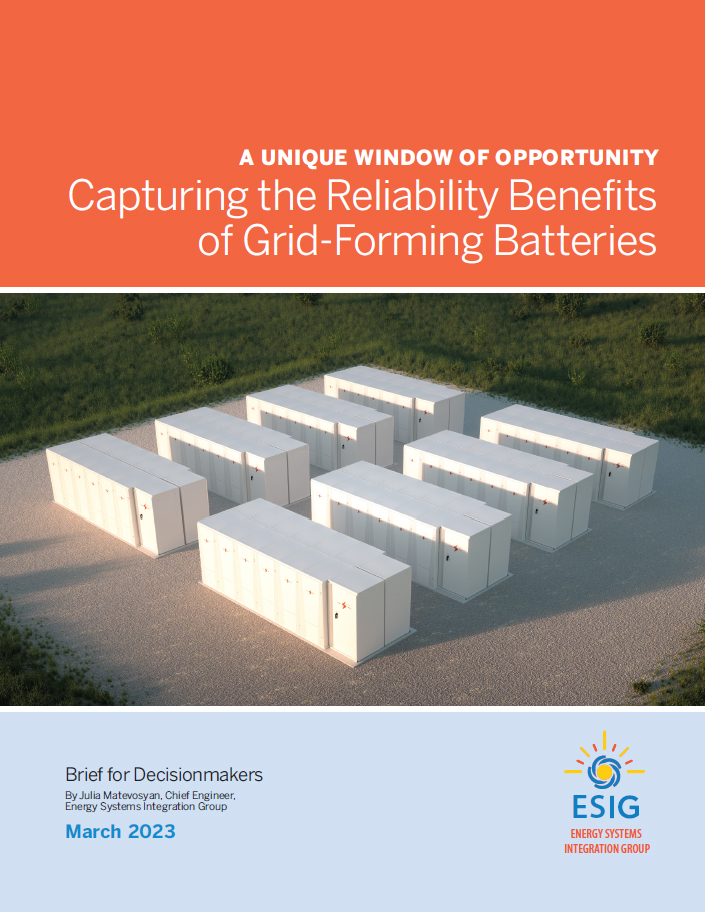
March 2023
Brief for Decisionmakers: Implementing grid-forming (GFM) controls on new battery storage systems has the potential to increase grid reliability at low cost. In the absence of incentives or requirements for GFM controls, batteries currently in interconnection queues will be built with conventional controls, leading to a need for additional stabilizing equipment in some areas with high levels of renewables. However, batteries equipped with GFM controls can provide stability to the system at low or zero additional cost. We have a unique window of opportunity to procure, test, and gain experience with GFM technology now, before the need for wind, solar, and battery storage to contribute to grid stability becomes acute. Areas that take advantage of this opportunity will be able to maintain grid reliability through the less expensive, more efficient means of having GFM batteries and renewables provide stability advantages themselves.
Click here to download this brief for decisionmakers.
Click here for the Grid-Forming Technology in Energy Systems Integration report and other accompanying materials.
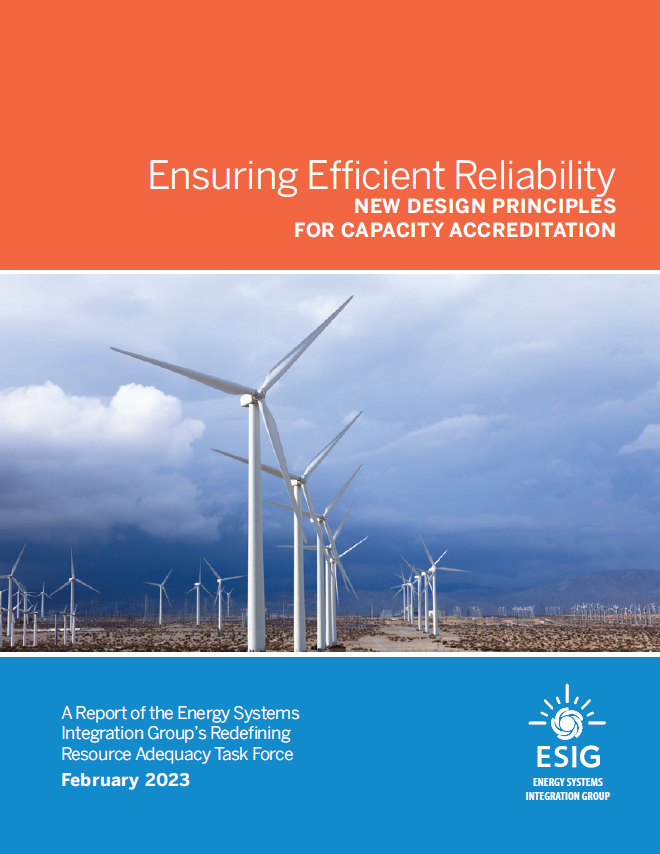 Ensuring Efficient Reliability: New Design Principles for Capacity Accreditation
Ensuring Efficient Reliability: New Design Principles for Capacity Accreditation
February 2023
This report discusses key considerations for capacity accreditation for the next phase of the energy transition in which solar, wind, and battery storage will be increasingly relied on to ensure grid reliability. The key considerations highlighted in this report are to ensure that capacity accreditation methods are applied to all resources, not just wind, solar, and battery storage, in a consistent, non-discriminatory manner; and to ensure there is a linkage between resource accreditation and real-world operations.
Click here to visit the report page for a downloadable copy along with accompanying materials.
White Paper Series: Aligning Retail Pricing with Grid Needs
 January 2023
January 2023
The ESIG Aligning Retail Pricing with Grid Needs Task Force examined ways that retail pricing may be used more widely and more efficiently to allow flexible demand to respond to grid needs as the role of demand becomes increasingly important for the reliability of the grid. The task force brought together experts in rate design and electricity markets, transmission and distribution planning and operations, consumer advocates, and others to explore current issues, potential solutions, and practical implementation challenges involved in utilizing the flexibility in price-sensitive loads.
Seven papers were drafted by key members of the task force that highlighted important challenges and in some cases solutions to the potential misalignment that exists today between grid needs and retail pricing structures.
Click here for links to each of the papers.
Proactive Planning for Generation Interconnection: A Case Study of SPP and MISO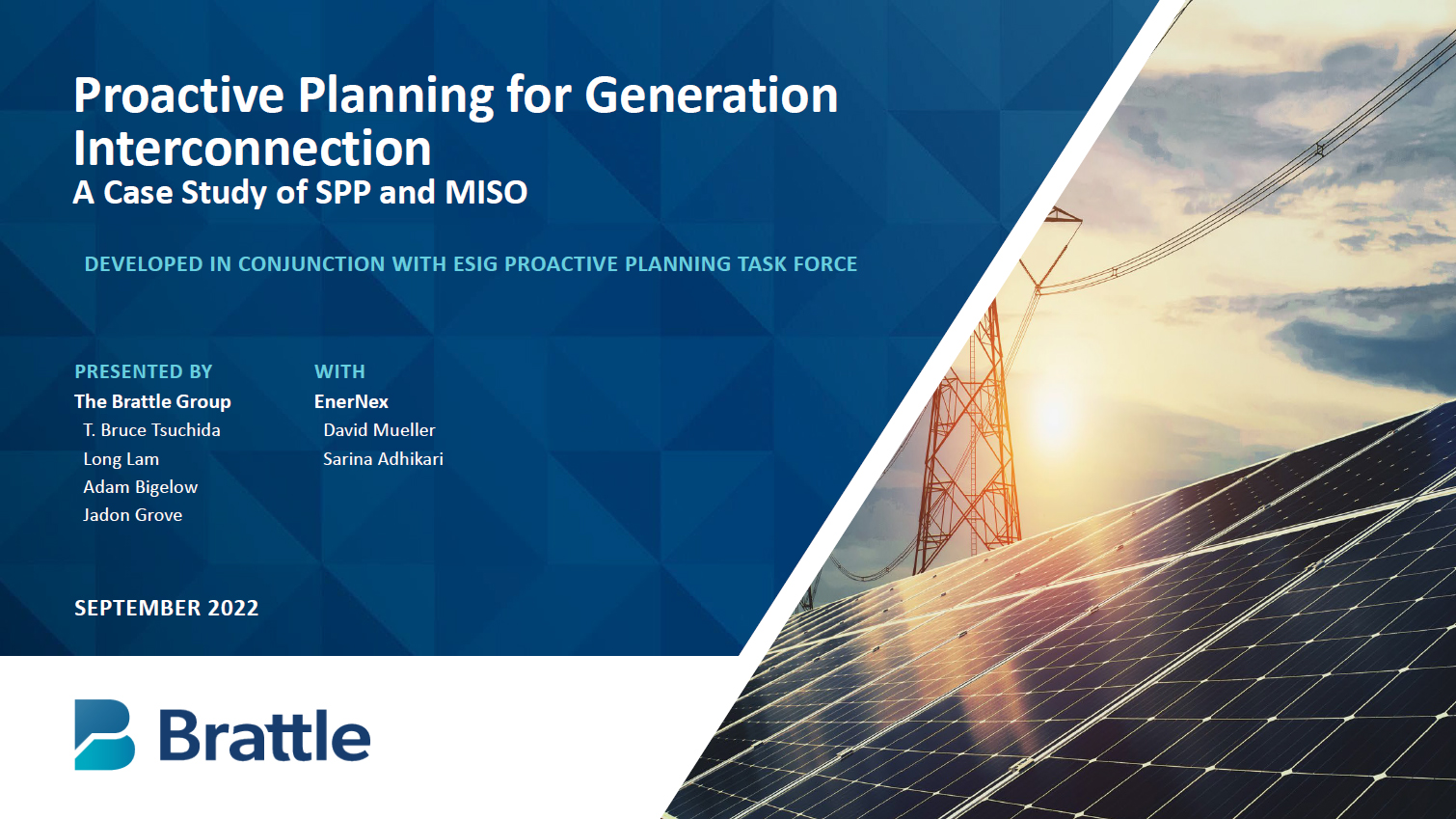
September 2022
This study examined three levels of proactiveness and calculated the average cost of interconnection for each. Using the Southwest Power Pool (SPP) and Midcontinent Independent System Operator (MISO) regions as a case study, the study assessed (1) a lower level represented by common practices today of studying generation interconnection on an annual or semi-annual basis, (2) a medium level represented by a three-year study window, and (1) a higher level represented by the five-year window used by the SPP/MISO Joint Targeted Interconnection Queue (JTIQ) study.
Click here to visit the study page for a downloadable copy.
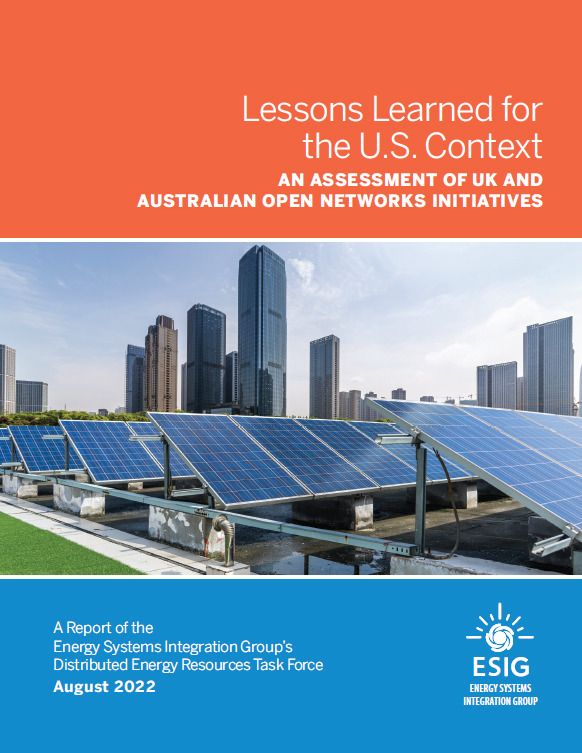 Lessons Learned for the U.S. Context: An Assessment of UK and Australian Open Networks Initiatives
Lessons Learned for the U.S. Context: An Assessment of UK and Australian Open Networks Initiatives
September 2022
This report provides an assessment of recent DER integration initiatives in the UK and Australia, distilling insights that would be instructive for the development of a national initiative around DER integration in the United States.
It is the second in a series of three reports on DER integration. See also the first report, DER Integration into Wholesale Markets and Operations, and the third report, The Transition to a High-DER Electricity System: Creating a National Initiative on DER Integration for the United States.
Click here to visit the report page for a downloadable copy along with accompanying materials.
The Transition to a High-DER Electricity System: Creating a National Initiative on DER Integration for the United States
September 2022
This report proposes a U.S. national initiative around DER integration that would create common concepts and vocabulary, more standardized solutions to nearer-term DER integration challenges, and more alignment across the industry on how to resolve longer-term challenges addressing a range of planning, operations, interconnection, and regulatory issues. It describes three tracks that a U.S. national initiative could pursue: technical foundations, least-regrets strategies, and dialogue on longer-term issues.
It is the third in a series of three reports on DER integration. See also the first report, DER Integration into Wholesale Markets and Operations, and the second report, Lessons Learned for the U.S. Context: An Assessment of UK and Australian Open Networks Initiatives.
Click here to visit the report page for a downloadable copy along with accompanying materials.
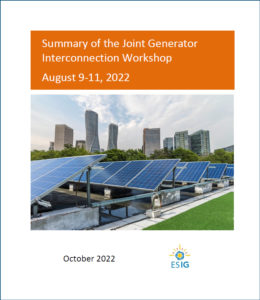 Joint Generator Interconnection Workshop (Virtual)
Joint Generator Interconnection Workshop (Virtual)
August 2022
This major online workshop covers the important relationships between interconnection process reforms and new capability and performance standards for inverter-based resources. The workshop provides education on both topics and how they interact for potentially expediting the large generator interconnection process while also supporting a more economic, sustainable, and reliable future power system.
Click here to visit the event page for a downloadable summary as well as recordings and presentations from the event.
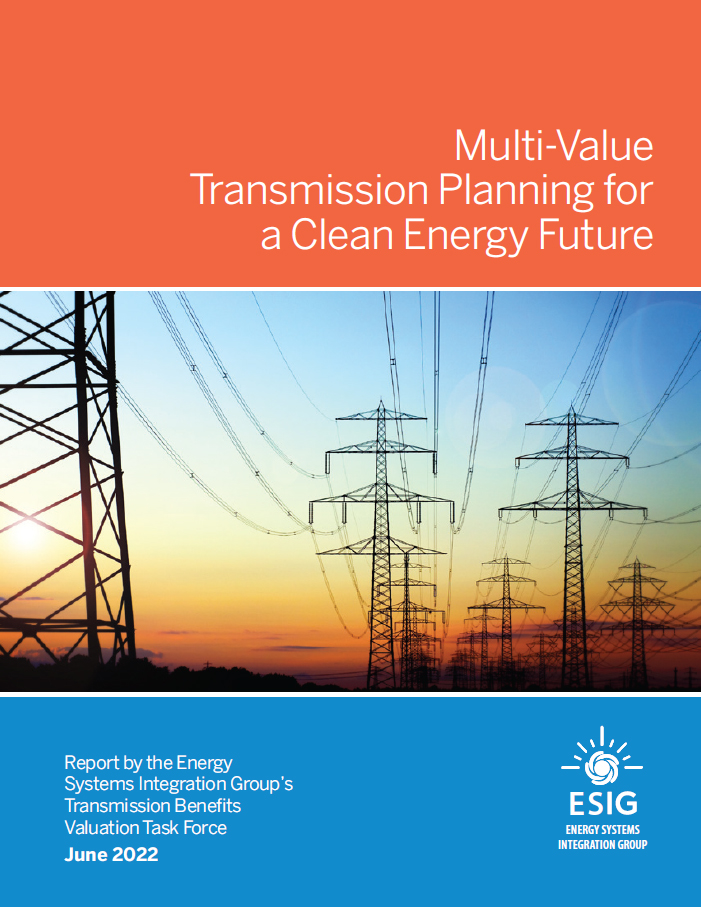 Multi-Value Transmission Planning for a Clean Energy Future
Multi-Value Transmission Planning for a Clean Energy Future
June 2022
This report demonstrates a methodology for evaluating a broad range of benefits from large-scale transmission expansion.
It illustrates how different types of transmission may have different benefits. This study showed the different sets of benefits from transmission that delivers energy from remote, high-quality resource zones and leads to fuel savings, and transmission that links diverse regions, resulting in less need to build generation capacity and thus capital cost savings.
Click here to visit the report page for a downloadable copy along with accompanying materials.
Grid-Forming Technology in Energy Systems Integration
March 2022
Grid-Forming Technology in Energy Systems Integration provides a comprehensive view of advanced inverter controls needed to run stable power systems with high shares of renewable energy.
The report presents a nine-step approach to breaking the chicken-and-egg cycle, starting from the perspective of evolving system needs. It explores the types of engineering and economic studies required to define and deploy new system services, and discusses the evolution of stability, analytical, and economic tools necessary to ensure stable power systems with high levels of renewables.
Click here to visit the report page for a downloadable copy along with accompanying materials.
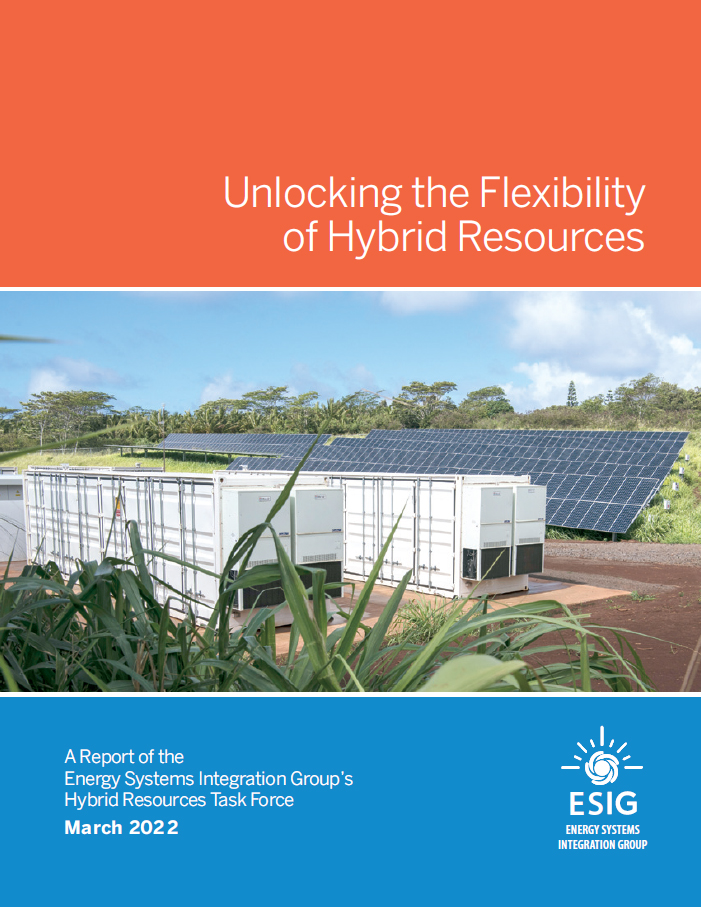 Unlocking the Flexibility of Hybrid Resources
Unlocking the Flexibility of Hybrid Resources
March 2022
Unlocking the Flexibility of Hybrid Resources discusses the rapid increase in hybrid resources across technology types, the ways these resources interconnect to the grid, and what they mean for system operations and markets.
The report offers initial recommendations for system planners, market designers, and policymakers as they define market rules and requirements that govern hybrids’ use, with the goal of encouraging flexibility and creativity in the design and implementation of new technologies and capturing the range of benefits they offer.
Click here to visit the report page for a downloadable copy along with accompanying materials.
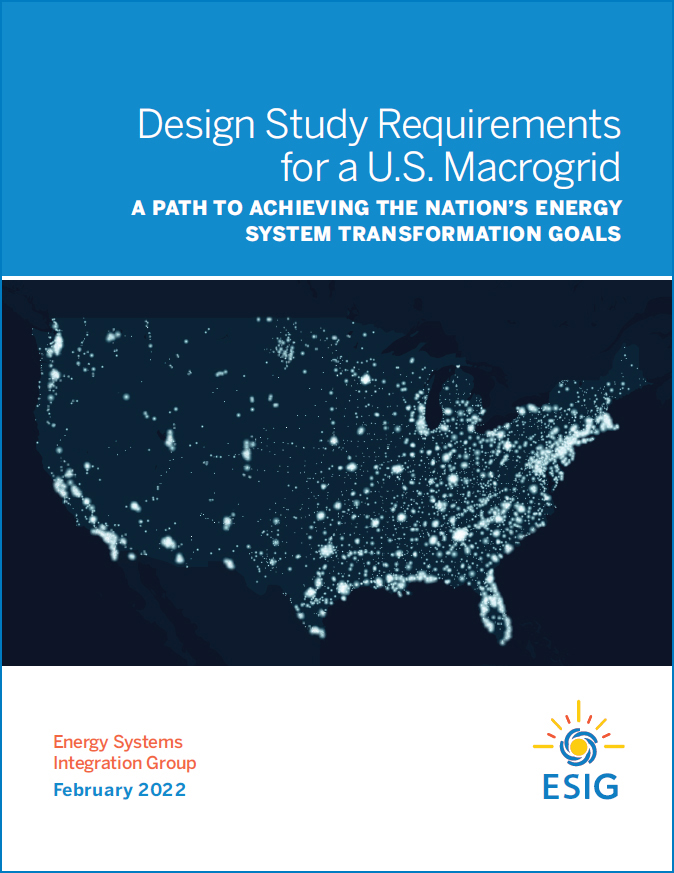 Design Study Requirements for a U.S. Macrogrid: A Path to Achieving the Nation’s Energy System Transformation Goals
Design Study Requirements for a U.S. Macrogrid: A Path to Achieving the Nation’s Energy System Transformation Goals
February 2022
The report articulates a set of recommendations for the next stage of proactive transmission planning of a national-scale HVDC macrogrid, which could be built over and interconnected into the existing AC grid. It draws from several comprehensive studies of a clean energy future for the United States and a series of workshops hosted by ESIG that brought together experts from across the industry, and delves into the reliability, resilience, economic, and operational aspects of the design.
Click here to visit the report page for a downloadable copy along with accompanying materials.
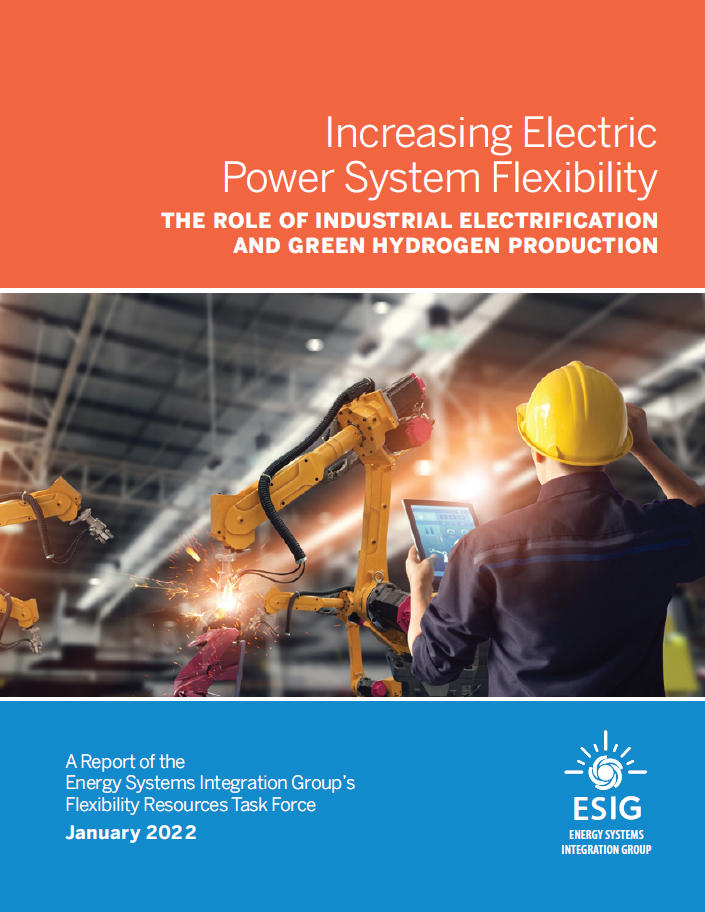 Increasing Electric Power System Flexibility: The Role of Industrial Electrification and Green Hydrogen Production
Increasing Electric Power System Flexibility: The Role of Industrial Electrification and Green Hydrogen Production
January 2022
This report lays out viable ways that industrial electrification and hydrogen production may provide flexibility and grid services in the future electric power system.
It discusses how electrified industrial loads and the production of hydrogen could be important sources of demand-shifting, in which hydrogen production and other industrial processes are timed to coincide with periods of low demand. These new sources of flexibility may also provide grid services; help to balance supply and demand over hours, days, and weeks; or, in the case of hydrogen, directly provide capacity and energy.
Click here to visit the report page for a downloadable copy along with accompanying materials.
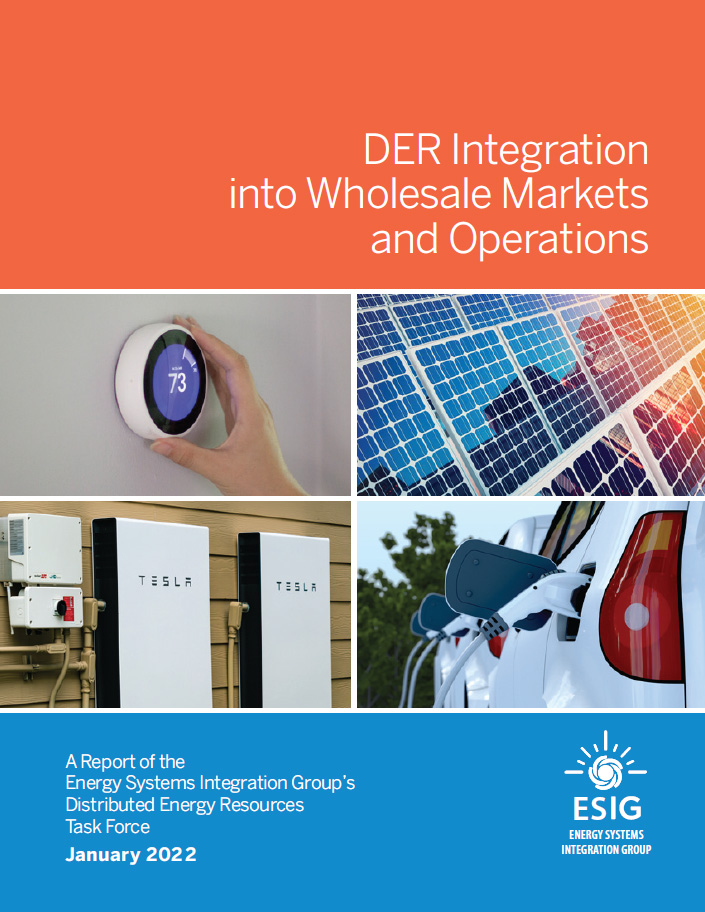 DER Integration Into Wholesale Markets
DER Integration Into Wholesale Markets
January 2022
This report examines the changes in regulation, market rules, planning, and operating practices needed to better integrate distributed energy resources into U.S. wholesale markets and operations.
The report covers the nearer-term implementation of FERC Order 2222, the order’s implications for electricity distribution systems, and higher-level needs for DER integration in wholesale markets and distribution systems more broadly.
Click here to visit the report page for a downloadable copy along with accompanying materials.
Redefining Resource Adequacy for Modern Power Systems
August 2021
Redefining Resource Adequacy for Modern Power Systems outlines six principles for the redesign of resource adequacy analysis—a central element of long-term reliability planning—to ensure that tomorrow’s power systems have the right resources to reliably serve load.
To reliably balance supply and demand on our future high-renewables grid, power system planners will need to analyze system needs not just during periods of peak load but hour-by-hour over the course of a year and do long-term resource planning that includes not only renewable energy, batteries, and some conventional generation, but also dynamic loads and transmission which allows electricity to be shared among neighboring grids.
Click here to visit the report page for a downloadable copy along with accompanying materials.
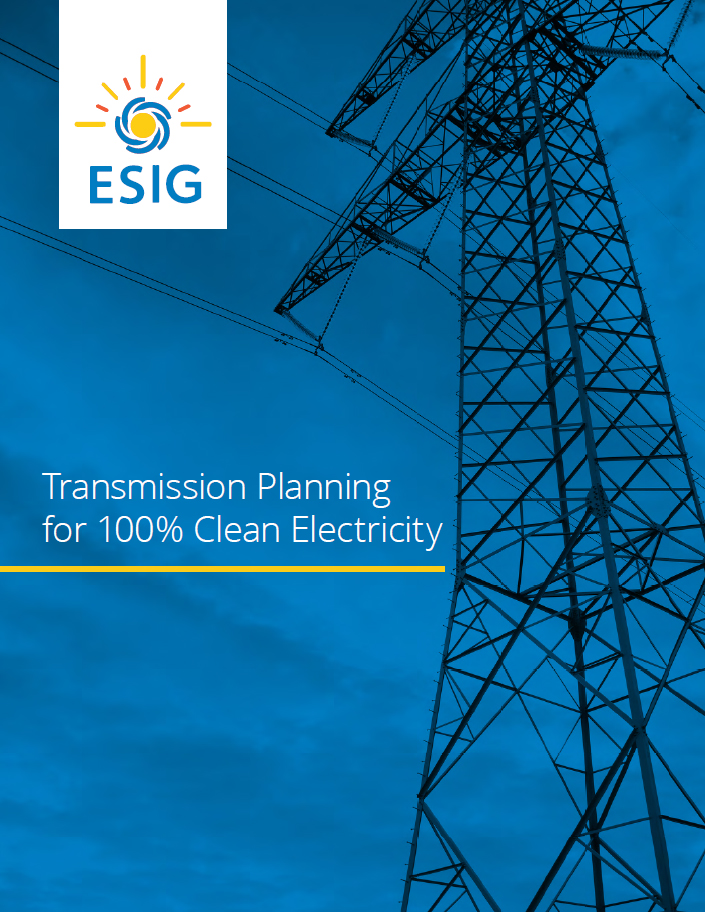 Transmission Planning for 100% Clean Electricity
Transmission Planning for 100% Clean Electricity
February 2021
Interregional transmission dramatically lowers the cost of achieving 100 percent clean electricity by reducing the amount of wind, solar, storage, and other capacity that must be built. This white paper reviews key research studies that assessed different pathways to achieving a low-carbon electricity grid, and presents the three components of the ESIG macro grid concept:
National transmission planning: The United States should establish a national transmission planning authority and initiate an ongoing national transmission planning process.
Renewable energy zones: Apart from energy efficiency, wind and solar energy are currently the lowest-cost sources of zero-carbon energy. The United States should designate renewable energy zones for large-scale wind and solar resource development and build large-scale transmission to those regions to expedite coordinated generation and transmission expansion.
Macro grid concept: The United States should develop and implement a national transmission network (the macro grid) of multi-regional high-voltage transmission that unites the country’s power systems.
The white paper outlines the characteristics of a well-designed macro grid, describes its three stages of development, and offers clear recommendations to guide a diverse group of stakeholders in designing and building an interregional macro grid for the United States.
Click here to visit the report page for a downloadable copy along with accompanying materials.


